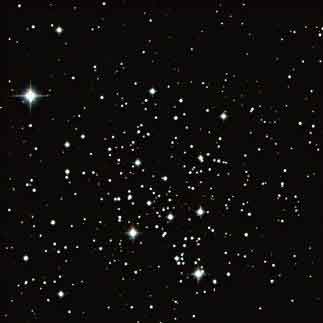- ^ [1] S1280 and S1284: Two Oscillating Blue Stragglers in the Open Cluster M67, Xiao-Bin Zhang, Rong-Xian Zhang and Zhi-Ping Li, Chin. J. Astron. Astrophys. Vol. 5 (2005), No. 6, 579–586.
- ^ [2] The White Dwarf Cooling Age of M67, Richer, Harvey B.; Fahlman, Gregory G.; Rosvick, Joanne; Ibata, Rodrigo, Astrophysical Journal Letters v.504, p.L91 (1998)
- ^ [3] A Complete N-body Model of the Old Open Cluster M67, Jarrod R. Hurley, Onno R. Pols, Sverre J. Aarseth, Christopher A. Tout, Mon.Not.Roy.Astron.Soc. 363 (2005) 293-314
- ^ [ http://www.aanda.org/articles/aa/pdf/2003/26/aah4157.pdf] Mass segregation in M67 with 2MASS, Ch. Bonatto and E. Bica, (2003) Astron. Astrophys. 405, 525
M67 "Atlas Image [or Atlas Image mosaic] obtained as part of the Two Micron All Sky Survey (2MASS), a joint project of the University of Massachusetts and the Infrared Processing and Analysis Center/California Institute of Technology, funded by the National Aeronautics and Space Administration and the National Science Foundation."
Messier 67 (also known as M67 or NGC 2682) is an open cluster, or galactic cluster, in the constellation Cancer. M67's Trumpler class is variously given as II 2 r, II 2 m, or II 3 r. It was discovered by Johann Gottfried Koehler in 1779. Its age is estimated at between 3.2 and 5 billion years. The most recently estimated age of four billion years appears to be the most reliable; thus the stars of M67 are most likely slightly younger than the Sun. M67 is not the oldest known open cluster, but there are very few in the galaxy known to be older. M67 is an important laboratory for studying stellar evolution, since all its stars are at the same distance and age, except for approximately 30 anomalous blue stragglers[1], whose origins are not fully understood. M67 is one of the most-studied open clusters, yet estimates of its physical parameters such as age, mass, and number of stars of a given type, vary substantially. Richer et al. [2] estimate its age to be 4 Gyr, its mass to be 1080 solar masses, and the number of white dwarfs to be 150. Hurley et al. [3] estimate its current mass to be 1400 solar masses and its initial mass to be approximately 10 times as great. M67 has more than 100 stars similar to the Sun, and many red giants. The total star count has been estimated at over 500[citation needed]. The cluster contains no main sequence stars bluer than spectral type F, other than perhaps some of the blue stragglers, since the brighter stars of that age have already left the main sequence. In fact, when the stars of the cluster are plotted on the Hertzsprung-Russell diagram, there is a distinct "turn-off" representing the stars which are just about to leave the main sequence and become red giants. As the cluster ages, the turn-off will move down the main sequence. It appears that M67 does not contain an unbiased sample of stars. One cause of this is mass segregation, the process by which lighter stars (actually, systems) gain speed at the expense of more massive stars during close encounters, which causes the lighter stars to be at a greater average distance from the center of the cluster or to escape altogether[4]. Links Messier 67, SEDS Messier pages References
Messier 18 Retrieved from "http://en.wikipedia.org/"

|
|
||||||||||||||||||||||||||||||||||||
